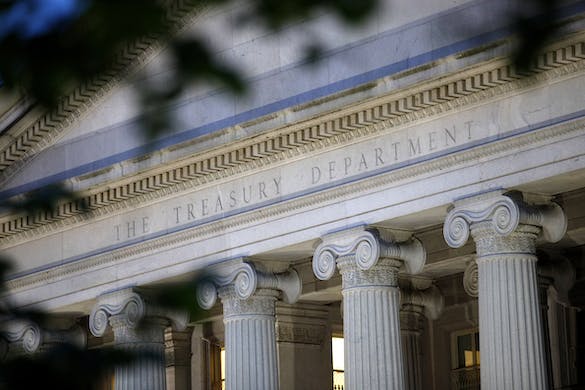The Gathering Storm
Reform of our monetary system lies at the heart of our debt, fiscal, and tax challenges. These all feature in the question of whether to raise the debt ceiling.

The coming fight over the debt ceiling is a moment for the Sun to say what we want — a compromise that keeps the government running but commits Congress to establishing a monetary commission. The idea would be to take a formal look at how the Federal Reserve has performed in the last 100 years, how our national experiment in fiat money has performed in the last 50 years, and how to return to honest money.
This is no radical proposition. The call for a national monetary commission was a plank in the Republican party platform in 2012, 2016, and 2020. In other words this is not a strange idea for the GOP. The Republican party has long been associated with a commitment to a sound currency going back to the days of McKinley. A commission would be the first step in a campaign to restore honest money in the United States.
This might seem like a side issue. Yet, in the Sun’s view, the reform of our monetary system lies at the heart of our debt, fiscal, and tax challenges. These all feature in the question of whether to raise the debt ceiling, which is shaping up as an early test in the new Congress. That’s because America is expected to hit its statutory national debt limit — $31.4 trillion — as soon as this week, the Associated Press reports.
This is happening earlier than expected, the AP reports, in part because of President Biden’s “pause on student loan repayments,” along with higher interest rates. The liberal press is already fretting that the rebels who thwarted Speaker McCarthy’s accession for 14 rounds will block a routine debt ceiling raise. This overlooks the opportunity presented by the debt debacle — which is, in effect, a crisis of overspending.
That’s not how the White House spins it. “Congress is going to need to raise the debt limit without — without — conditions,” Mr. Biden’s press secretary avers, adding: “It’s just that simple.” Seen in the right context, though, resolving the debt ceiling is going to require scaling back federal expenditures. The best way to put a strategic brake on runaway spending is sound money, which is by law defined in and redeemable for specie.
When the national debt hit $31 trillion in October, we noted how this Mount Everest of red ink was a symptom of the age of fiat currency. In 1971, when President Nixon closed the gold window, the debt was but $412 billion — 35 percent of the gross domestic product. Not pocket change, but a far cry from today’s indebtedness, which has soared to a level 120 percent above the entire annual output of the American economy.
Racking up a debt on this scale over such an extended period of time would not have been possible under a system of sound money, like the gold standard, which imposed fiscal discipline on the government — and on the Fed. The requirement that currency be convertible at a legally established rate into silver or gold serves as a kind of brake on spending and borrowing. With fiat currency, the Fed creates billions with a few keyboard strokes.
The same lack of discipline that led the Fed to rack up an unprecedented $9 trillion in assets under its monetary experiments, known as Quantitative Easing, is matched by the profligacy of Congress, which has chosen to borrow in order to cover the lavish spending promises it has made. The road to this indebtedness, too, was paved by the Fed keeping interest rates artificially low as part of its efforts to manipulate the economy.
We’re not in favor of shutting down the government, but we are in favor of holding out for reform of our monetary system. The first step is a commission, modeled on the Reagan-era panel that weighed “the feasibility of a metallic basis for U.S. currency” and the one that led to the Fed’s creation. We like the way it was put in 2012 in the GOP platform endorsing a commission “to investigate possible ways to set a fixed value for the dollar.”
Correction: 120 percent of GDP is the size of America’s national debt. A slightly larger percentage was given in the bulldog.

